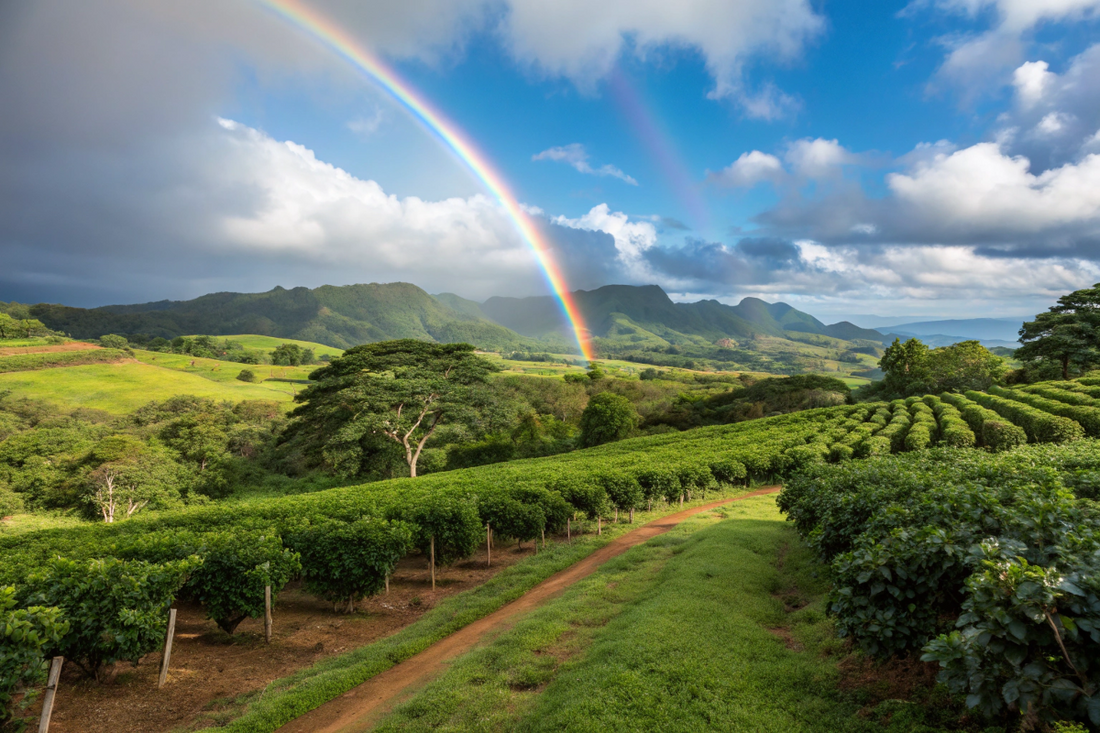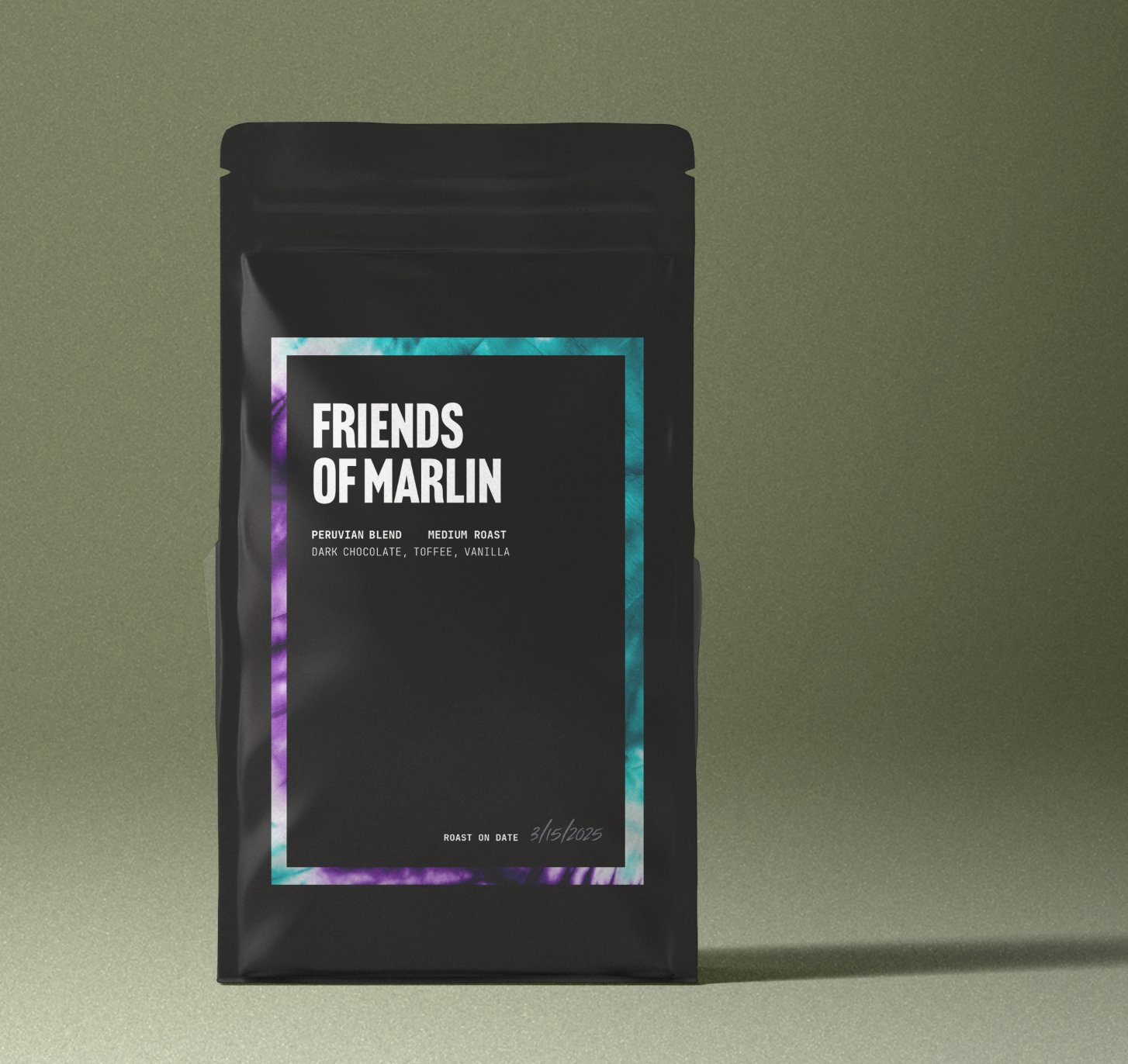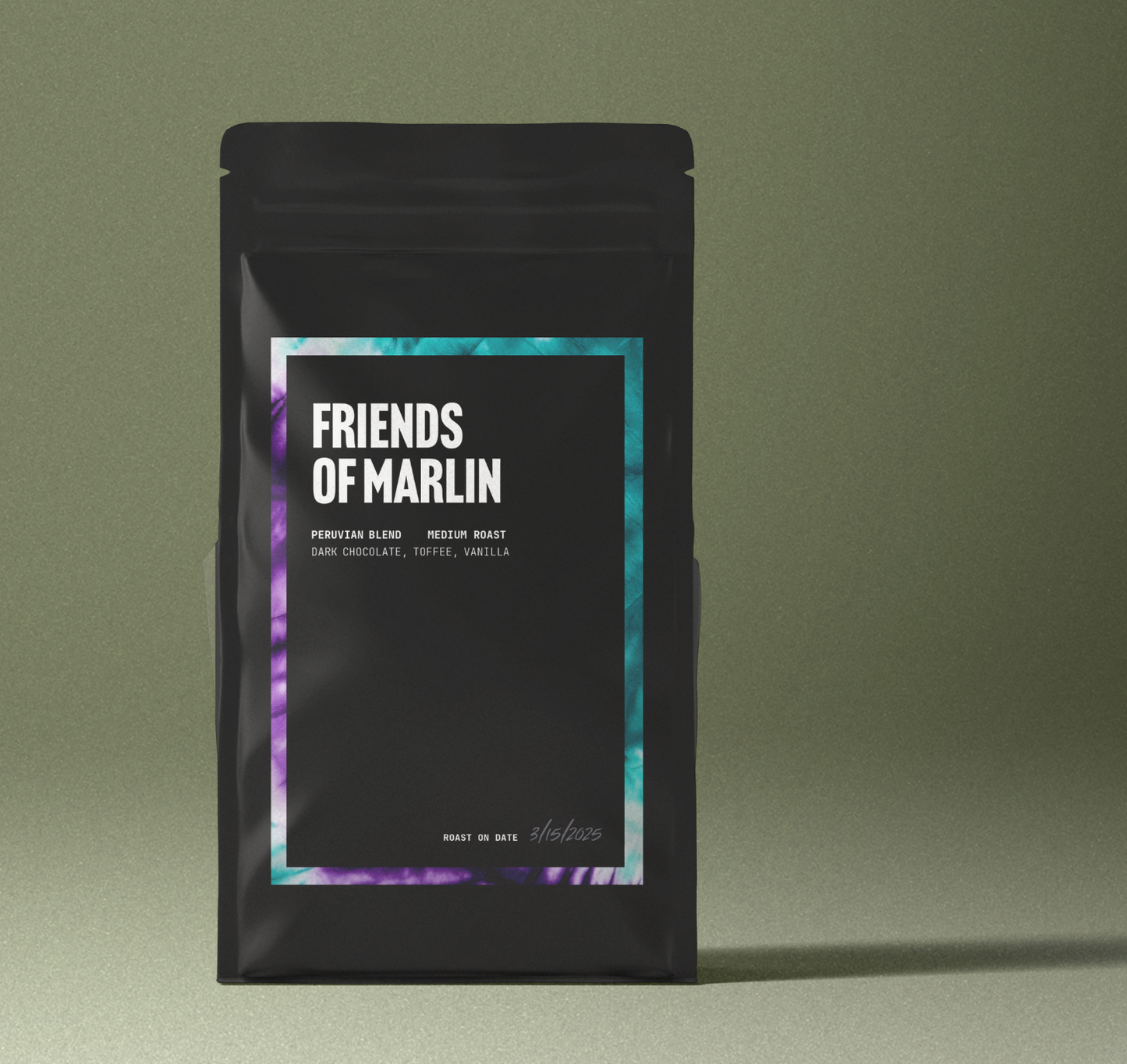
A Journey Through Hawai‘i’s Coffee Regions
Share
Introduction – Paradise in a Cup
When most people imagine Hawai‘i, they picture swaying palms, volcanic peaks draped in emerald, and waves crashing over coral reefs. Yet tucked amid that postcard scenery is another treasure: coffee. Hawai‘i is the only U.S. state with a commercial coffee industry, and its beans command some of the world’s highest prices. The archipelago’s isolated geography, volcanic soils, and micro‑climates forged by trade winds create a terroir unlike any other. From the storied Kona district on the Big Island to the windswept plateaus of Moloka‘i, each Hawaiian region offers a distinct flavor narrative—macadamia sweetness, winey berry notes, or spicy chocolate depths.
In this blog we will tour the islands, explore their coffee histories, cultivars, processing traditions, and the socio‑economic forces shaping Hawai‘i’s specialty scene. Whether you are a barista seeking deeper origin knowledge, a traveler planning a plantation tour, or a home brewer chasing that elusive Kona Typica cup, consider this your definitive field guide to Hawaiian coffee.
A Brief History: Missionaries, Monarchs, and Micro‑Farms
Coffee arrived in Hawai‘i in 1825 when Chief Boki, Governor of O‘ahu, returned from Brazil with Arabica seedlings. Early plantings struggled in the wet lowlands of Mānoa Valley, but in 1828 Reverend Samuel Ruggles transplanted cuttings to the drier, higher elevations of Kona on the Big Island, laying the groundwork for Hawai‘i’s most famous origin. By the 1860s, Kona coffee had become a staple export of the Hawaiian Kingdom, shipped to San Francisco gold‑rush markets.
Unlike the large estates of Latin America, Kona coffee grew on tiny plots cultivated by Japanese immigrant families under the sharecropping kōpeka system. This smallholder structure fostered meticulous hand‑picking and sun‑drying traditions that persist today. Over time, coffee spread to every major island, riding waves of agricultural diversification after the decline of sugarcane and pineapple. Today, more than 1,200 farms across Hawai‘i cultivate roughly 7,800 acres of coffee, generating an industry valued at over $60 million annually.
The Cultivar Palette: Typica and Beyond
Kona Typica – The Heritage Backbone
The backbone of Hawaiian cup quality is Kona Typica, a descendant of the Bourbon‑Typica lineage introduced by Ruggles. Tall, low‑yielding trees with elongated cherries, Typica thrives in the islands’ mild temperatures (60–80 °F) and volcanic loam. Its cup profile is famed for silky body, mild acidity, and flavors of milk chocolate, toasted almond, and tropical fruit.
Caturra and Catuai – Compact Workhorses
In the 1980s, researchers at the University of Hawai‘i’s CTAHR (College of Tropical Agriculture and Human Resources) introduced Caturra and Catuai—dwarf Bourbon derivatives favored for higher yields and easier harvesting on mechanized estates like Kauai Coffee Company. These cultivars produce brighter acidity and citrus notes compared with Typica.
Mokka, SL‑28, and Novel Hybrids
Maui Mokka—a dwarf Yemen accession—has captured the imagination of specialty roasters with its tiny, round beans and intense cacao‑nib and cherry notes. Some experimental plots on O‘ahu and the Big Island are trialing SL‑28 (famed in Kenya) for its drought tolerance and vibrant cup. Researchers are also crossing Typica with Catimor to breed resistance to coffee leaf rust (CLR), which arrived in Hawai‘i in 2020, threatening the archipelago’s coffee future.
The Big Island: Hawai‘i Island’s Diverse Districts
1. Kona District – The Legend Lives On
Geography & Climate
Kona coffee grows on the western slopes of Hualālai and Mauna Loa volcanoes between 600 and 2,500 ft (180–760 m). This 20‑mile strip—nicknamed the Kona Coffee Belt—enjoys a unique diurnal rhythm: sunny mornings ripen cherries, afternoon cloud cover and mist prevent heat stress, and cool nights concentrate sugars. Annual rainfall hovers around 60 in (1,500 mm), delivered mainly between April and October.
Farming Structure
Over 650 family farms averaging just 3–5 acres dot the belt. Generations of Japanese, Filipino, and Portuguese descendants hand‑pick cherries in multiple passes to ensure peak ripeness. Wet milling typically happens on‑farm using pulpers powered by small gasoline engines or gravity water flumes. Fermentation lasts 12–18 hours, followed by sun‑drying on hoshidana decks—elevated platforms with rolling roofs that protect parchment from sudden tropical showers.
Flavor Profile
Classic Kona cups display a gentle citric acidity, round body, and notes of caramel, milk chocolate, and dried fruit. Some higher‑elevation farms (Holualoa, Kainaliu) offer brighter, berry‑tinged profiles, while lower belts lean toward nutty sweetness.
Challenges & Opportunities
High labor costs (pickers earn $1 per lb cherry) and real‑estate development pressure squeeze farm margins. The 2020 introduction of CLR and earlier infestations of coffee berry borer (CBB) have forced growers to adopt integrated pest management (IPM) and resistant cultivars. Despite these hurdles, the Kona Coffee Cultural Festival—held every November—celebrates the region’s heritage and drives tourism revenue.
2. Ka‘u District – The Rising Star
South of Kona, the Ka‘u region gained global attention in 2007 when Ka‘u coffees swept top honors at the Specialty Coffee Association’s Coffee of the Year competition. Farms around Pāhala and Na‘ālehu sit at 1,200–2,100 ft (365–640 m) on the southern flanks of Mauna Loa, where deep ash soils and persistent mauka (mountain) breezes yield large, dense beans.
Flavor profiles trend toward floral aromatics, bright citrus (orange zest, tangerine), and syrupy sweetness. Larger land parcels—many repurposed sugarcane fields—allow for experimental processing: honey, natural, and yeast‑inoculated anaerobic lots. The annual Ka‘u Coffee Festival fosters direct relationships between farmers and international buyers, accelerating Ka‘u’s rise from obscurity to specialty darling.
3. Puna District – Volcanic Adventure
East Hawai‘i’s Puna district, stretching from Kea‘au to Kalapana, presents one of the archipelago’s most dramatic landscapes—lava fields, rainforest, and geothermal steam vents. Coffee farms sit lower (600–1,200 ft) and receive up to 150 in of rain annually. High humidity necessitates mechanical drying or parabolic greenhouses to prevent mold. Cups often exhibit herbal, spicy notes (sarsaparilla, allspice) and a winey acidity. While volumes are small, Puna’s boutique producers appeal to adventurous roasters seeking unique island terroir.
4. Hamakua Coast – The Waterfall Corridor
North of Hilo, the Hamakua coast boasts towering waterfalls and deep gulches carved by centuries of rainfall. Former sugar plantations near Honoka‘a and Pa‘auilo have been replanted with coffee at 800–2,000 ft. Frequent cloud cover and rich Andisols produce beans with vibrant acidity and notes of green apple, honey, and macadamia. Hamakua growers often collaborate through the Hamakua Coffee Association to market their micro‑lots under a unified brand.
Maui Nui: Coffee Amid Valley Isle Wonders
1. Maui – Kāʻanapali and Upcountry
In the 1980s, Pioneer Mill Company converted 500 acres of former sugarcane near Kāʻanapali into one of the world’s first large‑scale mechanized coffee farms. Planted with Caturra, Catuai, and the exotic Maui Mokka, the estate employs strip harvesting and drum dryers to process massive volumes. While some purists lament mechanization, consistent agronomy and advanced milling deliver clean cups with cocoa, stone fruit, and bright citrus.
Further upslope in Kula and Olivine, smallholder farms grow Typica and Yellow Caturra at 2,000–3,500 ft, benefiting from cool nights and ‘Ōhi‘a lehua forest shade. These upcountry coffees lean toward floral jasmine, white peach, and delicate acidity, contrasting with the bolder Kāʻanapali profiles.
2. Moloka‘i – The Friendly Isle’s Red Cinder Soils
Across the Pailolo Channel, Coffees of Moloka‘i cultivates about 500 acres on the Kualapu‘u plateau, a former pineapple field with iron‑rich red cinder soil. Typica trees at 800–1,000 ft endure arid conditions mitigated by drip irrigation. The estate’s washed coffees offer medium body, sweet spice, and hints of dark chocolate, while limited natural‑processed lots showcase dried berry and rum raisin flavors. Moloka‘i’s remote charm and sparse population make plantation tours an intimate experience.
3. Lāna‘i – A Boutique Experiment
Though Lāna‘i once boasted a 100‑acre coffee operation in the 1990s, production ceased when pineapple giant Dole exited the island. Recently, boutique farmers have replanted small parcels with Typica and Bourbon, experimenting with regenerative organic methods. While commercial volumes remain negligible, watch this space—Lāna‘i’s highlands at 1,800 ft could deliver intriguing micro‑lots in the coming decade.
O‘ahu: Coffee on the Gathering Place
Waialua Estate – North Shore Pioneers
On O‘ahu’s famed North Shore—better known for surf breaks like Pipeline—Waialua Estate Coffee & Chocolate grows 155 acres of Typica and Caturra on former sugar land near Hale‘iwa. Sea‑breeze mornings and cool trade‑wind evenings create a gentle maturation curve. Wet milling is followed by sun drying on raised beds fashioned from reclaimed sugarcane equipment. Waialua’s washed coffees offer a sweet‑savory profile: brown sugar, light citrus, and a hint of sea salt—a reflection of its coastal terroir.
Kunia and Waimānalo – Urban Edge Farms
Smaller plots in Kunia (central O‘ahu) and Waimānalo (windward side) supply local farmers’ markets with honey‑processed Typica and Catuai. These peri‑urban farms face unique challenges—bird predation, limited labor—but benefit from proximity to Honolulu’s booming culinary scene, which champions hyper‑local sourcing.
Kaua‘i: Island of the Garden Coffee Estate
Kauai Coffee Company – America’s Largest Coffee Farm
On Kaua‘i’s sunny south shore, Kauai Coffee Company sprawls over 3,100 acres on the former McBryde Sugar plantation, making it the largest coffee farm in the United States. Mechanized harvesters and drip irrigation allow efficient production of over four million pounds of green coffee annually. The estate primarily grows Yellow Catuai and Typica at 300–800 ft, supplemented by trial plots of Pacamara and SL‑28.
Flavor profiles skew toward bright citrus (grapefruit, lime), sweet nougat, and a clean finish. While mechanization sacrifices some complexity compared to hand‑picked Kona micro‑lots, consistent quality and scalable volumes make Kauai Coffee a staple in U.S. grocery aisles. The visitor center near Koloa offers educational tours and unlimited tastings, positioning Kaua‘i as a premier agri‑tourism destination.
North Shore Micro‑Farms
Beyond the mega‑estate, boutique growers in Hanalei and Kīlauea cultivate shade‑grown Typica at 700–1,200 ft amid tropical fruit orchards. These micro‑lots, often processed as naturals to conserve water, yield cup notes of passion fruit, cocoa nib, and delicate florals. Limited quantities fetch high prices through direct‑to‑consumer online sales.
Island‑Wide Processing Traditions
Washed, Honey, and Natural
Hawaiian coffee traditionally follows the washed process—depulping, 12‑24 hour fermentation, and sun drying. However, water scarcity, labor costs, and specialty market demand have spurred experimentation. Honey process (mucilage partially left on) produces richer mouthfeel and fruitier notes, popular among Ka‘u and Maui producers. Natural process(whole‑cherry sun‑drying) is gaining traction in drier zones like Kaua‘i and Moloka‘i, where stable weather allows clean, defect‑free drying.
Mechanical Drying & Solar Innovation
Frequent rainfall in Kona and Puna forces farmers to supplement sun drying with mechanical dryers—rotary drum or Guardiola—to meet moisture targets of 10–11 %. Solar‑powered dehydrators and parabolic greenhouses offer sustainable alternatives, reducing reliance on propane and electricity.
Grading & Certification: Decoding Extra Fancy to Peaberry
Hawai‘i operates a rigorous grading system enforced by the Hawai‘i Department of Agriculture (HDOA). Green beans are classified by screen size, defect count, and moisture:
- Extra Fancy – largest beans, ≤8 defects per 300 g
- Fancy – slightly smaller, ≤12 defects
- No. 1 – common export grade, ≤18 defects
- Select – ≤25 defects, often used in blends
- Prime – local market grade, ≤35 defects
Peaberry—single‑seed cherries—are graded separately and prized for concentrated flavor. Origin labeling laws require that blends using the name “Kona,” “Ka‘u,” etc., must contain at least 10 % coffee from that region, though many specialty roasters advocate for 100 % origin purity to protect farmers and consumers.
Sustainability, Pests, and Climate Resilience
Coffee Berry Borer and Leaf Rust
The coffee berry borer (Hypothenemus hampei) arrived in Kona in 2010, slashing yields by up to 30 % before IPM—Beauveria bassiana fungus sprays, strip picking, and field sanitation—reined it in. In 2020, coffee leaf rust (Hemileia vastatrix) appeared on Maui, quickly spreading statewide. Researchers are fast‑tracking resistant cultivars and copper‑based fungicides, but long‑term resilience hinges on breeding and agroforestry diversification.
Labor and Land Pressures
Hawai‘i’s high cost of living and limited labor pool push farm wages far above global competitors. Some estates offset costs with agri‑tourism—tastings, farm‑to‑cup experiences, and vacation rentals. Others experiment with mechanical harvesters, though steep slopes in Kona and Ka‘u limit adoption.
Climate Change
Rising temperatures and shifting rainfall threaten lower‑elevation farms with heat stress and drought. Studies by CTAHR predict upslope migration of optimal coffee zones by 2050. Shade‑tree intercropping with macadamia, kukui, and native ‘ōhi‘a helps buffer micro‑climates, while rainwater catchment and drip irrigation conserve scarce water.
Coffee Tourism: Festivals, Farm Tours, and Surf‑Side Espresso
- Kona Coffee Cultural Festival (November): parades, cupping competitions, and lei‑making workshops celebrate 200 years of Kona coffee heritage.
- Ka‘u Coffee Festival (May): farm tours, roasting classes, and a pageant honoring Miss Ka‘u Peaberry.
- Maui Coffee Association’s Seed to Cup Festival (August): barista throw‑downs, sensory workshops, and live Hawaiian music.
- Kaua‘i Coffee Estate Tours: self‑guided walking paths among 4‑million coffee trees, culminating in a tasting flight overlooking Hanapēpē Valley.
- Waialua Estate Cupping: surf in the morning, cup coffee in the afternoon—only on O‘ahu’s North Shore.
These events intertwine coffee with hula, ‘ukulele music, and island cuisine, offering visitors an immersive sense of place while providing farmers with direct sales and feedback.
The Future: Innovation Rooted in Tradition
Hawai‘i’s coffee industry stands at a crossroads. Pest incursions and climate volatility demand scientific innovation, yet the islands’ brand equity relies on heritage cultivars and hand‑crafted quality. Collaborative efforts between farmers, CTAHR, and private roasters aim to strike this balance: breeding resistant Typica lines, refining low‑water honey processes, and leveraging blockchain traceability to authenticate 100 % Hawaiian origin.
On the consumer side, demand for ethically sourced, island‑grown products shows no sign of waning. Mainland U.S. cafés feature single‑origin Kona pour‑overs at premium prices, while Asian markets prize Ka‘u and Maui microlots for gift‑giving. Digital platforms allow tiny farms in Puna or Hanalei to ship roasted beans worldwide, bypassing middlemen.
Ultimately, Hawai‘i’s coffee story is one of resilience—adapting to lava flows, hurricanes, and global market shifts while retaining the aloha spirit that infuses every cup.
Conclusion – Savoring the Aloha Terroir
From the gentle slopes of Kona to the breezy plateaus of Kaua‘i, Hawaiian coffee is as diverse as the islands themselves. Each region reflects a dialogue between volcano and ocean, sun and mist, tradition and innovation. The next time you sip a cup labeled “100 % Hawai‘i,” pause to taste the macadamia orchards, the salt‑tinged trade winds, and the hands of multi‑generational farmers who picked each cherry. Better yet, book a flight, rent a car, and follow the scent of roasting beans across the islands—you’ll discover that in Hawai‘i, paradise truly can be poured into a mug.

